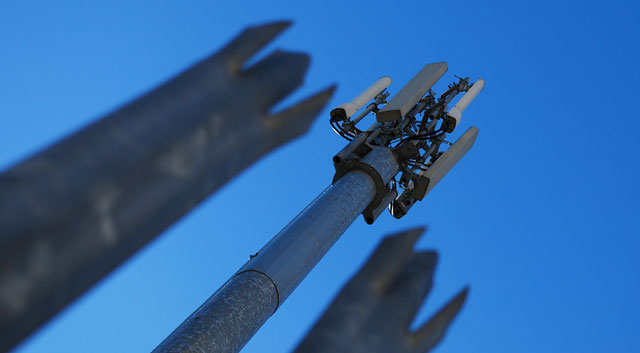
With the roll-out of 4G mobile Internet not even yet complete, it might seem early to consider starting work on the design of the next, fifth-generation (5G) mobile networks. The truth is that telecommunications systems are so complex in design and so slow to deploy that it could be 10 years between conception and end users being able to enjoy the benefits.
Each generation of mobile telecoms technology has provided data transmission speeds several orders of magnitude higher than the last. The first-generation mobile phone tech, introduced in Scandinavia in 1981, was entirely analogue, providing — at a push — basic data transfer of only a few kilobits per second. Arriving in 1991, 2G GSM phone networks were entirely digital, bringing advances such as text messages and data rates of up to 14,4kbit/s. The introduction of GPRS and Edge, often called 2.5G, improved speeds to between 40-170kbit/s. The 3G networks that followed in 2001 upped data rates considerably to between 3-14,4Mbit/s and subsequent improvements such as HSPA (termed 3.5G) upped these again to 40-300Mbit/s and beyond.
The 4G networks now being deployed based on LTE & LTE-A will in time offer speeds beyond a gigabit per second. Following the same curve, we can expect 5G to provide a similar leap by around 2025, offering multi-gigabit speeds currently enjoyed only by those with fibre-optic connections to the Internet backbone.
But the next generation needs to provide more than speed alone. It must bring far better coverage, lower latency and greater capacity. Because, although 5G will aim to provide a quantum leap in terms of users’ quality of experience, the major difference is that 5G networks will be designed for use by machines, not just humans. The emerging Internet of things will see all manner of everyday objects, household appliances, portable and wearable devices designed to be Internet-connected.
They will be able to provide data from sensors to us or to other connected devices — and our future cellular network technology will underpin the connectivity that makes these devices useful.
The true revolutionary paradigm shift with 5G will, however, be the emergence of the tactile Internet, in which sufficiently responsive, reliable network connectivity will enable it to deliver physical, tactile experiences remotely. For example, imagine delivering (possibly self-assembling) hospital equipment to the areas of West Africa currently suffering from the Ebola epidemic. The best doctors and surgeons could then perform diagnosis and even surgery remotely using connected, tactile technologies. Remote surgery is already being performed — in years to come far greater feats will be possible, and this is what we at King’s College London are working on now.
Because the tactile Internet will be servicing really critical aspects of society, it will need to be ultra-reliable, maybe a second of outage per year, support very low latency and short end-to-end delays in the order of milliseconds — and have sufficient capacity to allow large numbers of devices to communicate with each other simultaneously and autonomously. It will be able to interconnect with the traditional wired Internet, the mobile Internet and the Internet of things — thereby forming an Internet of entirely new dimensions and capabilities.

We imagine the tactile Internet will, in the business-to-business ecosystem, drive markets for autonomous cars, remote medical care markets, energy resource extraction and power generation, and other challenging industries. For consumers, it will revolutionise the way we teach, learn and interact with our surroundings. A preliminary market analysis has revealed that the potential market could extend to US$20 trillion worldwide — around 20% of today’s worldwide GDP.
The efforts required to bring this about have already begun in industry, academia and in the committees of the International Telecommunication Union Radiocommunication (ITU-R), which draw up and formalise the standards for future technology. The expectation is that 5G networks will arrive in roughly 10 years — these long design cycles are a significant shortcoming, but they are the result of the consensus approach taken by the committees and standards bodies such as 3GPP. There are voices calling for a simplified and more efficient way to develop mobile standards, which would lower the barrier of entry for start-ups and drive innovation and faster development cycles.
This might be the other revolution happening behind the doors of the development of 5G. In any case the next decade’s work bringing 5G to fruition will require a worldwide effort. In Europe at least, this has already begun at Technische Universität Dresden’s 5G Lab under Professor Gerhard Fettweis, through research from teams at King’s College London and the University of Bristol, and the imminent opening of the University of Surrey’s 5G Innovation Centre (5GIC).![]()
- Mischa Dohler is professor of wireless communications at King’s College London
- This article was originally published on The Conversation

